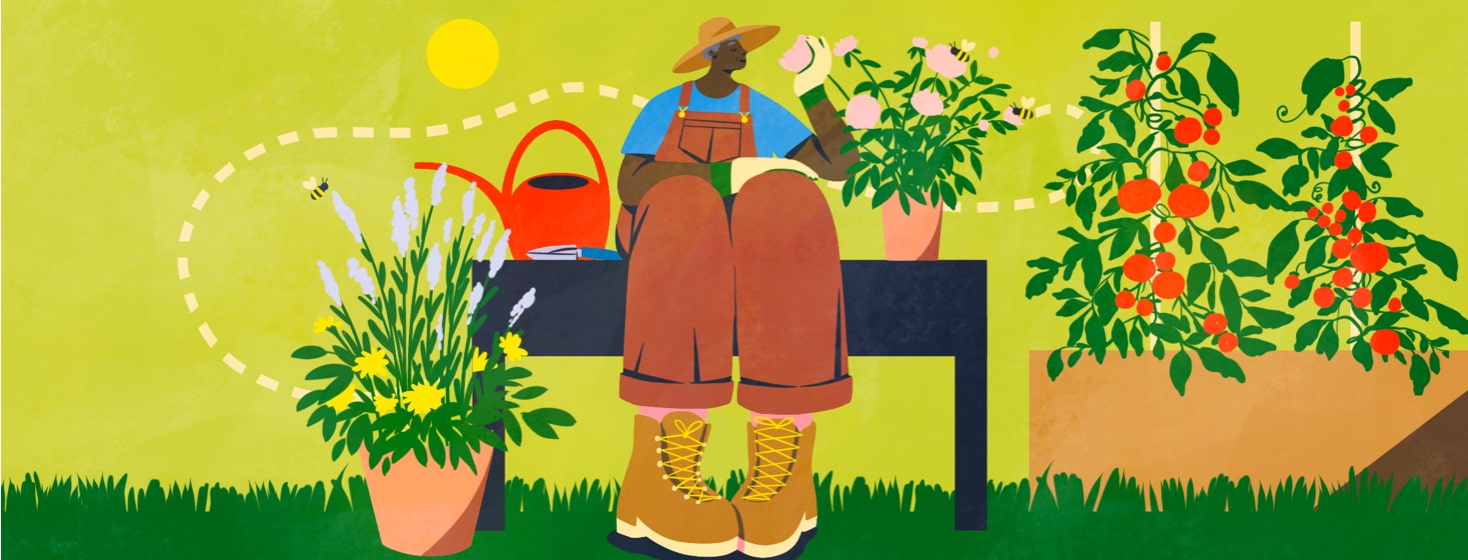How I Garden With Arthritis
I come from a long line of gardeners. My great grandfather was a proper professional English Gardener. My grandmother grew lots of veggies, including a crop of carrots pushed into right angles by our recalcitrant clay soil. My aunt landscapes and grows vegetables with the best of them.
Gardening is one of my favorite activities, but on my own terms. My personal philosophy in writing and in life is somewhat absurdist, but my gardening is utilitarian. I love the affordable fresh produce that only kitchen gardening brings. And there’s something peaceful about watching all the bees work away in our yard.
Arthritis means I don’t have time for complications
Give me greens, beans, turnips, radishes, and herbs. Each of these plants grows easily in our yard and requires minimal care and feeding. Each one manages to look as pretty as it is nutritious!
Pollinators picnic
We grow milkweed, members of the carrot family, zinnias, chives, borage, and butterfly bushes in great abundance. My aunt has built up a collection of bulbs and flowering shrubs to feed the pollinators that visit us. The dandelions also do their part to feed hungry early bees and butterflies before other food sources are abundant.
Focus
It’s tempting to just wing it and keep packing more and more plants into your space, but this rarely ends well. Plants must be well placed in the right soil with plenty of room to get adequate water and sun. Some plants don’t like each other. Pick a subject or theme to start with and stick with it for the year. You’ll learn about which plants and techniques work with your space and your body.
Plan ahead
Preventing weeds is a better use of your time and energy than deciding what to spray on them or how to yank them out. Weeds and pests are part of gardening. Prevent them from taking hold by using barrier methods like landscaping fabric, netting, and horticultural fleece. Containers and raised beds control weeds better than working directly in your own soil.
Clarity
Arthritis means uncertainty about what we can do and when. Be honest with yourself about what your body can do. It’s possible to garden successfully with these limitations, but only if we admit that there’s something to manage. It might take a few seasons to identify the best methods for you.
Gardening can be daunting to the newbie and the experienced gardener alike. No garden is ever perfect or complete. The main thing is to find a mix of plants and techniques that we enjoy.
Here are a few questions to feed your gardening inspiration!
- What’s your favorite flower or shrub?
- Do you like fresh herbs and pesto? Why not grab some herbs from the produce section and pot them up?
- Do you fancy bees, butterflies and hummingbirds? Find out what your native species like to eat.
- Which specific fruits or vegetables do you like?
- Do you need something ultra low maintenance? Grab some potted herbs or air plants.
- Do you like whimsy? Give a teacup or fairy garden a try.

Join the conversation